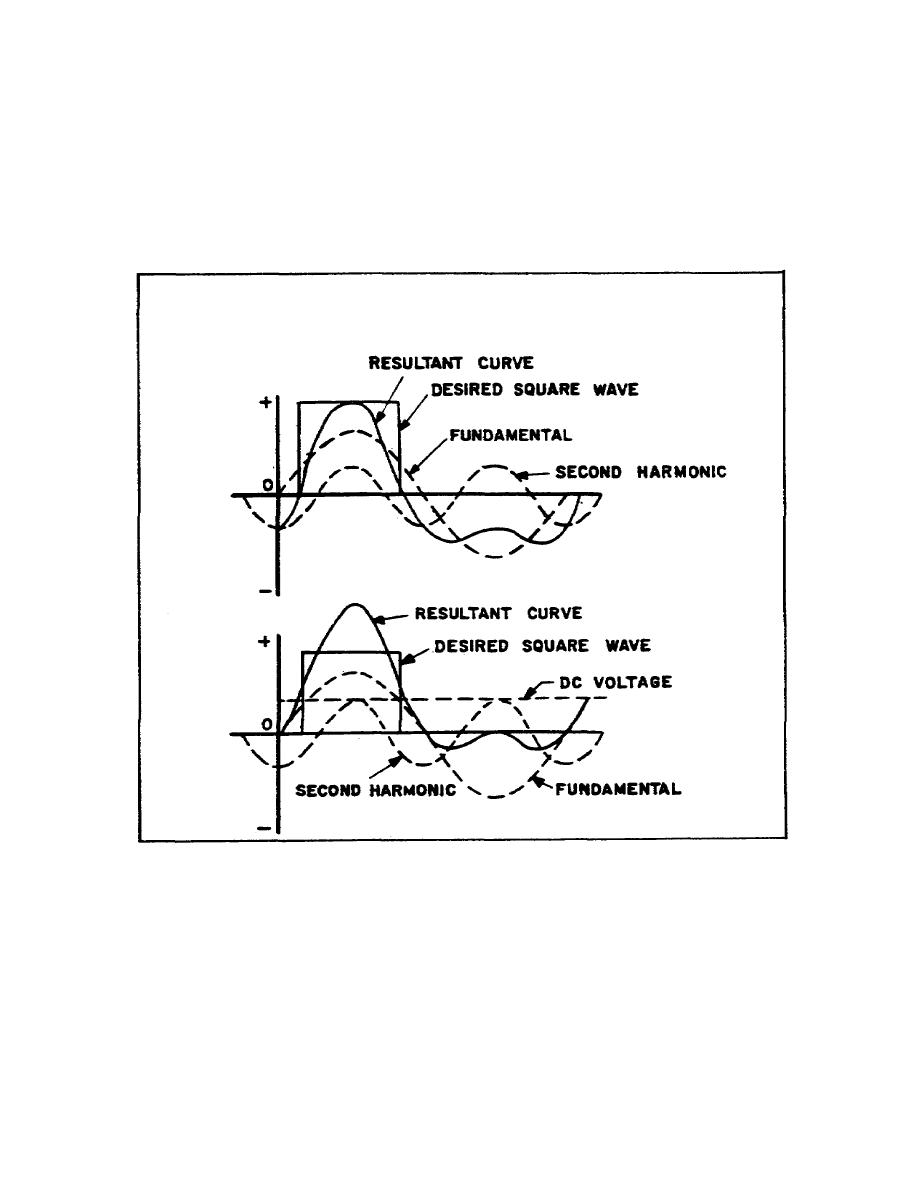
If the pulse repetition frequency is 1000 Hz, then the fundamental
frequency (Figure 3A) will be 1000 Hz with an amplitude equal to two
thirds of the desired pulse amplitude. The second harmonic will be a
2000 Hz sine wave with an amplitude equal to onethird of the desired
pulse amplitude. It can be seen that there is a resemblance between
the desired square wave and the resultant curve. As each additional
harmonic frequency is added in the proper phase and amplitude, the
resultant waveform more closely resembles the desired pulse.
Figure 3. Composition of a short pulse with a
longtime interval
b. Composition of a sawtooth wave. A sawtooth wave is formed by
the addition of a fundamental frequency and both its even and odd
harmonics. The effect of adding the fundamental frequency and its
second harmonic is shown in Figure 4A. The resultant wave resembles
the sawtooth wave more than the fundamental frequency wave alone
because the peak is pushed to one side. Figure 4B shows the
resultant wave when the third harmonic is added to the resultant wave
of Figure 4A. In the illustrations,
7


 Previous Page
Previous Page
